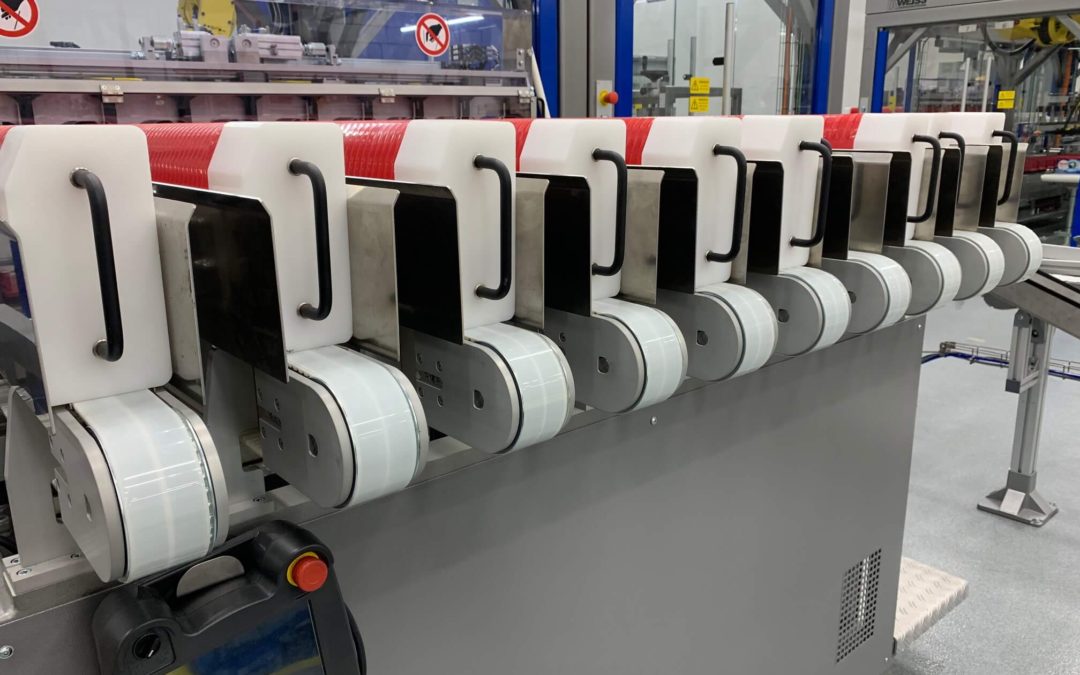What is a Timing Belt?
Timing belts, often known as cambelts or timing chains (although the latter is a separate type of system, as we’ll see), are devices that are typically found attached to a power transmission system’s rotational mechanics.
They’re most commonly seen connecting the crankshaft to the camshafts to preserve the precise alignments (timings) between these two crucial components as they revolve at differing – but consistent, relative to one another – speeds.
Timing belts were uniformly made from thick strands of robust, resilient rubber in practically all engines developed before the last 20 years. Hardwearing rubber materials have remained a functionally perfect alternative for sustaining the tension between important moving parts in the short-to-medium term to this day.
Rubber compounds, on the other hand, are prone to disintegrate over time due to frequent exposure to extreme heat from the engine and contact with aggressive substances such as motor oil. The loss of ideal tension as a result of this lengthy exposure would normally harm the precise opening and shutting times of engine valves. This necessitates the replacement of a cambelt at some point to restore sluggish engine performance to its previous level.
Timing Belt Uses
Timing belts are often ridged with protruding rubber “teeth” around the circle, and it is these teeth that allow the timing belt loop to spin the camshafts via the crankshaft as the various sections rotate at a regular ratio of speeds in an engine. These components are thus in charge of opening and closing the intake and exhaust valves in an engine when used together.
When a cambelt is in good working order and functioning properly, the opening and closing of these valves are kept in sync with the up-and-down motion of pistons within the engine’s cylinders, allowing for smooth and efficient operation of the entire apparatus as the engine cycles through each of its various “strokes” (usually intake, compression, power, and exhaust).
In the event of a broken or malfunctioning timing belt, engine valves may become jammed open, posing a major risk of serious damage to the mechanism of so-called “interference engines” if they are repeatedly impacted by pistons. By keeping the valves and pistons separate, non-interference engines avoid this particular difficulty. However, without a functional cambelt, the engine will be effectively immobilized.
Because timing belts loop around a variety of pulleys to connect all of the key engine components in order, they typically require several tensioners to maintain the appropriate tension along their entire length. Because they’re virtually always about the same age as the main belt and have a comparable predicted lifespan, they’ll almost always need to be changed along with new cambelts.
Timing Belts Material
Over the years, a variety of materials have been utilised in the design and construction of timing belts, and research is ongoing to find new, more resilient, more power-efficient, and quieter options.
Some materials as listed below are:
- Rubber
- Polyurethane
- Fabric
- Rubber Timing Belts
Rubber timing belts are the industry standard, and can be used in a wide range of settings and applications. A rubber timing belt was used on most internal combustion engine cambelts, such as those seen on the majority of cars (and certainly any built more than a decade ago). It’s still a popular option today, however more recent versions tend to include a variety of temperature-resistant rubber compositions for increased durability and distortion resistance. High-strength additives to prevent teeth shearing off and reinforcing fibres for better tensile strength are two more qualities you might find in higher-performance rubber timing belts.
- Polyurethane Timing Belts
As a means of transferring power, polyurethane timing belts provide a long-lasting and extremely energy-efficient solution for a wide range of applications in a variety of sectors and industries. They have more suppleness than rubber and come in a variety of temperature and fuel resistance ratings.
Polyurethane timing belts also offer excellent load capacity and tensile strength. They’re oil, chemical, and abrasion resistant, as well as simple to clean and maintain, making them a popular choice for a variety of power transmissions and roller conveyor systems, including line-shaft conveyors.
- Fabric timing belts
Fabric timing belts are commonly used in high-performance settings and applications, such as transmission of high torque at low speeds and drives with extremely high acceleration forces.
Fabric timing belts typically contain a variety of materials that, when combined in specific ways, can provide exceptional tensile strength and tear resistance for use in more extreme environments. On today’s market, fabric compounds with extremely low coefficients of friction and extreme high/low temperature resistance are becoming more common.
Sizing of Timing Belts
Because of the unique role that timing belts play in synchronising the rotation speed of two shafts of various sizes, there are numerous factors to consider when determining the proper belt sizing for the application and system in question.
The cambelt width, material, and number of teeth or’pitch’ – common timing belt pitch ratings include 3mm, 5mm, and 8mm, but the correct choice will depend entirely on the specifics of your system or project – as well as overall power transmission requirements and the various shaft speeds in the mechanism it’s being fitted to are all important factors to consider.
The environment in which the timing belt will be used, as well as the compatibility of the materials used, will have a significant impact on the precise dimensions and configuration of the optimum timing belt for your needs.
Summary
Many engines and other power transmission systems rely on timing belts of various types to keep them running smoothly. While they’re a common and widely available component found in a wide range of day-to-day situations and applications, choosing the right type, material, size, and tooth profile to meet the demands of its intended job is just as crucial as procuring from the right place. DPH Engineering helps you find the right kind for all your business needs. Stay connected with us for more information.

